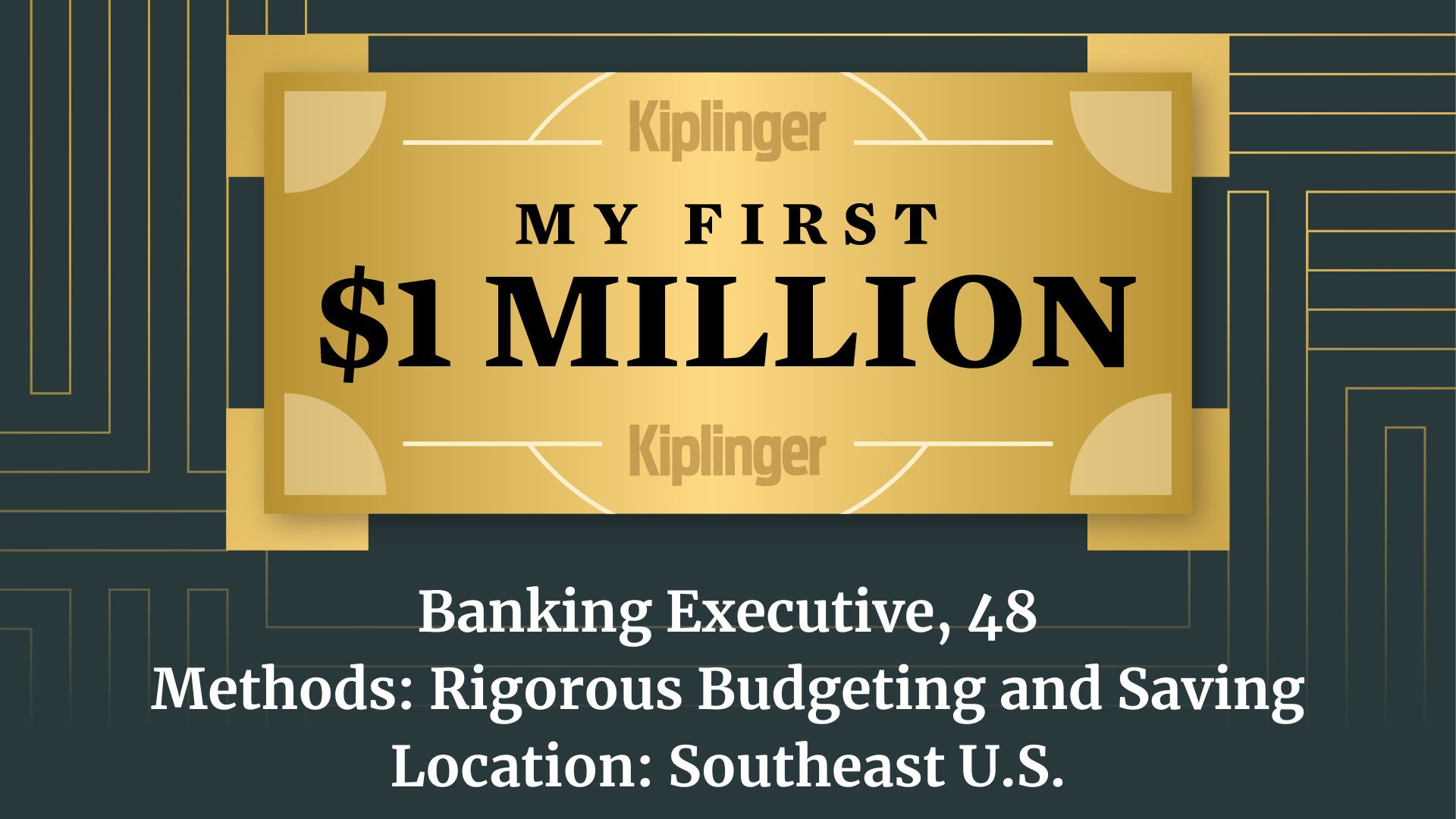6 Steps to Retire When You Want
If you hope to quit your job earlier rather than later, here's how to make it work.


For some, the idea of retiring early is a dream nurtured over decades. For others, it’s the realization that they could walk away from their career right now and manage just fine. For still others, it comes as a virtual smack upside the head from a financial planner who asks why they’ve waited so long.
In some ways, the above scenarios—all of which represent the experiences of people featured in this story—run counter to the current trend of working longer. The average age at which people retire has increased over the past two decades, and longer life expectancy is just one of several compelling reasons for staying in the workforce a few extra years. (For the benefits of working longer, see 6 Reasons to Work Beyond Retirement Age.)
For all that, the idea of working well into old age has yet to catch fire. Men retire at 64, on average, just two years later than they did in the mid 1990s, according to the Center for Retirement Research at Boston College; women retire at 62, on average, up from 59 two decades ago. In a recent survey of Kiplinger’s readers, 55% of those responding said they retired at 62 or younger. And for workers of both genders, by far the most popular age at which to claim Social Security is 62—as soon as they’re eligible.
From just $107.88 $24.99 for Kiplinger Personal Finance
Become a smarter, better informed investor. Subscribe from just $107.88 $24.99, plus get up to 4 Special Issues

Sign up for Kiplinger’s Free Newsletters
Profit and prosper with the best of expert advice on investing, taxes, retirement, personal finance and more - straight to your e-mail.
Profit and prosper with the best of expert advice - straight to your e-mail.
There’s no right time to retire for everyone, but there is a right way to plan for it. Here’s how to position yourself to retire when you want.
Assess Your Savings
Saving regularly from the beginning of your career to the end has always been the prescription for a comfortable retirement. To retire at 67, for instance, Fidelity Investments recommends that you set aside 15% of your salary, including any employer contribution, starting at age 25 and continuing throughout your career, resulting in a retirement stash of 10 times your final income. The formula assumes you’ll replace 45% of your preretirement income with savings, with the rest of your income coming from Social Security. To replicate your standard of living and retire at 62, you’d have to save 25% of your salary starting at age 25, says Fidelity.
As with all long-term goals, however, life has a way of intruding, in the form of kids, mortgages and college costs. If you start saving for retirement late or cut back on saving for a few years, you’ll have to double down to get back on track. That’s challenging but not impossible, says Kevin Reardon, a certified financial planner in Pewaukee, Wis. “We get clients who are in their early fifties, the kids are out of the house and they’re past the college expenses. Now they’re able to sock away a big chunk of money.” Uncle Sam gives you a boost: If you are 50 or older, you can make annual catch-up contributions of up to $6,000 to your 401(k), for a total of $24,000 in 2017, and up to $1,000 to your IRA, for a total of $6,500.
You may realize that your post-career plans—hanging with the grandkids or enjoying long walks in the woods—don’t require 10 times your preretirement income, or that retiring a year or two earlier than scheduled is worth skipping the ski trips to Gstaad later on. Savings benchmarks are a guide, not an imperative, says Jeanne Thompson, a senior vice president at Fidelity. “When people decide they’re ready, they take stock of what they have and make it work.”
Tim and Mary Joyce of Muskego, Wis., have always lived modestly. “We’re very conscious of budgets and saving, and we’re not extravagant. We don’t incur much debt, and we paid our house off quite a few years ago,” says Tim, 64. When Mary, 63, a longtime employee of General Electric, was offered early retirement, the couple assessed their resources and realized they could retire whenever they chose. She took the offer and left her career job at 56; Tim retired a few years later, at 59. “We retired early because we could,” he says.
And they have no regrets. Financially, “our lifestyle hasn’t changed at all,” says Tim, but now they have more time to pursue their hobbies (he restores old cars, and they are renovating their vacation home, a log cabin in northern Wisconsin). They are also able to contribute to college-savings accounts for each of their four grandchildren.
Plan for Social Security
Deciding when to take Social Security is a key part of the planning process. But it’s even more important if you retire before your full retirement age—66 for people born between 1943 and 1954, gradually rising to 67 for people born in 1960 or later. If you claim as soon as you’re eligible, at 62, you’ll take a 25% to 30% reduction in benefits from what you’d get at full retirement age. For every year you wait after full retirement age until 70, you’ll get an 8% boost in benefits, on top of any cost-of-living adjustments.
The earlier you retire, the more tempting it is to file for benefits—after all, at 62, it’s yours for the taking, and you can’t live on fumes. But many financial planners recommend holding off, even if that means using retirement savings to cover the income gap. By forgoing benefits a little longer, you’ll reap a much higher amount, which will help you stretch your savings over a retirement that could last as long as 40 years.
That higher benefit also applies to your spouse, who qualifies for a survivor’s benefit equal to your benefit if you die first. Given the increase in life expectancy (men who reach 65 live until 82.9, on average; women live until 85.5), “for every couple who retires today at 65, chances are good that one spouse will live into his or her nineties,” says Jenny Martella, a CFP in Charlotte, N.C.
Delaying Social Security doesn’t make sense for everyone. If you’re retiring because you have a health issue or you lost your job and need the income, or if you believe you won’t reach your life expectancy, you should probably take the money sooner rather than later. Even so, says Russ Thornton, a CFP in Atlanta, try to wait at least until your normal retirement age to get the full benefit. One way to do that is to have one spouse (usually the lower earner) take his or her benefit early to generate income while the other spouse waits.
Some financial planners argue for the more conservative approach, at least at the beginning, to protect against the chance that a bear market could cripple your savings and maybe even force you to go back to work. Others believe you need some extra oomph in your portfolio to protect against inflation over several decades. “If you’re investing in ‘safe’ investments, such as money market funds or bonds, a 2.5% inflation rate over time will eat your savings alive,” says Martella. She recommends a stocks-to-bonds ratio of 60-40 to 70-30, depending on your risk tolerance.
Another way to address the growth-versus-risk problem is to separate your portfolio into “buckets.” With this approach, says Marcy Keckler, vice president of financial advice strategy at Ameriprise Financial, you set aside enough cash or cash equivalents in the first bucket to cover one to three years of living expenses, after factoring in guaranteed income, such as Social Security. The second bucket holds slightly riskier investments, such as intermediate-term bond funds and a few diversified stock funds, for income with some growth; you’ll eventually use profits from that bucket to replenish the first. The third and largest bucket represents a balanced portfolio of diversified stock and bond funds, for long-term growth.
Darrow Kirkpatrick of Santa Fe, N.M., was in his thirties when he began to think about retiring early. A computer engineer, Kirkpatrick, now 56, got in on the ground floor of the PC revolution, and he had the bucks to show for it. He loved his job but still wanted to retire. By living frugally and saving diligently, he and his wife, Caroline, now 58, believed he would be able to retire in 2008, when he was 47. Then the market tanked. Kirkpatrick ended up retiring in 2011. Caroline, who had taken time off to raise their son, returned to work as a schoolteacher before retiring in 2013.

Not surprisingly, Kirkpatrick has designed his investment strategy to protect against shocks such as that of 2008. “I keep several years’ income in cash and a lot in bonds, so I don’t have to liquidate when the market is down,” he says. He also calibrates withdrawals to align with market conditions rather than go with a set withdrawal rate of, say, 4%. “It’s intuitive. If the market is down, you bring your lifestyle down; if the market is doing well, you can splurge a little that year,” says Kirkpatrick. His approach accords with advice from retirement planners who recommend taking withdrawals using the same “dynamic strategy.”
Secure Health Coverage
A few years ago, John Patterson, 64, of Annapolis, Md., sold his share of a family insurance company for a generous annual payout. He and his wife, Linda Stein-Patterson, 61, had already accumulated substantial savings, put their two daughters through college and paid off their home. Although Patterson expected to continue working, perhaps part-time (Linda had left the workforce years earlier to be home with their kids), his financial planner insisted he could afford to retire.
So far, the plan has worked out well—but one element of retiring early has caused John a bit of heartburn. Neither he nor Linda is eligible yet for Medicare. They get their coverage through the Affordable Care Act, paying a premium of $1,600 a month for a basic Bronze plan, with a $6,500 per-person deductible.
Prior to the ACA, many would-be retirees were unable to quit their day jobs before 65 because insurers in the individual market made it difficult to get coverage for preexisting conditions. The ACA prohibits insurers from denying coverage for existing health problems, a godsend for many early retirees.
But the coverage can be pricey. Premiums in 2017 for the Silver plan—the most popular choice for those who qualify for subsidies—run an average of $872 a month for a 60-year-old nonsmoker, according to HealthPocket Info Stat, an independent research company. The average deductible is $3,572 for an individual and $7,474 for a family.
You may qualify for a premium subsidy in 2017, however, if your modified adjusted gross income is 100% to 400% of the 2016 federal poverty level ($11,880 to $47,520 for individuals and $16,020 to $64,080 for married couples filing jointly). That could be the case if your wealth is mostly in savings and home equity and you have yet to take distributions from pretax accounts, or if you have enough exemptions and deductions to be in the lowest tax bracket. Lawmakers are preparing to repeal this law, although they have also pledged to work on a replacement.
Other options? If you work for a company with 20 or more employees, you can usually continue your coverage for up to 18 months after leaving your job through the federal law known as COBRA (some states have similar rules for smaller employers). You’ll have to pay both the employer’s and the employee’s share of the cost, plus a 2% administrative fee. Once you qualify for Medicare, your COBRA coverage generally ends, although employers will let you keep it for benefits Medicare doesn’t cover, such as for prescription drugs and vision care. Your spouse can continue to get COBRA for up to 36 months or until he or she also qualifies for Medicare (see the Medicare Rights Center's Part B Enrollment Toolkit).
Plan for Your New Life
Patterson wasn’t planning to retire when he did, but he has had no problem filling his time. An accomplished cellist, he plays in several area orchestras (for which he practices several hours a day) as well as with a smaller group, and he sings in a choir. He and Linda attend concerts and take classes together at a local community college.
Patterson was lucky: Music, his lifelong avocation, provided him with a built-in structure for his retirement. Not all retirees can say the same, says Tharp. After enjoying a few months of leisure, “they realize they weren’t prepared for retirement. They don’t have anything to do.” That’s especially painful for hard-charging executives who retire in the prime of life, he says. “They’re bored out of their mind.”
Kirkpatrick came up with his own second act by writing a blog on retiring early. “You can’t just quit a job without a plan and expect to be happy,” he says. “You start to feel a loss of meaning.” He suggests coming up with ideas for what you might want to do and then trying them before you retire. “Volunteer, start working on that novel, start an online business.”
For some people, the dream activity just might be returning to work—on their own terms. After leaving GE, Mary Joyce decided to get a part-time job at a senior living center, not because she needed the money but because “she gets to help a lot of people,” says Tim. She set up her schedule so the couple could spend long weekends at their log home and still have time for their grandchildren, who live in the area. Bored? No way, says Tim. “There’s always something going on.”
Profit and prosper with the best of Kiplinger's advice on investing, taxes, retirement, personal finance and much more. Delivered daily. Enter your email in the box and click Sign Me Up.

-
 How to Safely Open an Online Savings Account
How to Safely Open an Online Savings AccountOnline banks offer generous APYs that most brick-and-mortar banks can't match. If you want to make the switch to online but have been hesitant, I'll show you how to do it safely.
-
 7 Ways to Age Gracefully Like the Best Stock Photo Seniors
7 Ways to Age Gracefully Like the Best Stock Photo SeniorsAs a retirement editor, I've gleaned valuable wisdom (and a lot of laughs) from one older couple that tops the seniors' stock photo charts.
-
 My First $1 Million: Banking Executive, 48, Southeast U.S.
My First $1 Million: Banking Executive, 48, Southeast U.S.Ever wonder how someone who's made a million dollars or more did it? Kiplinger's My First $1 Million series uncovers the answers.
-
 What Does Medicare Not Cover? Eight Things You Should Know
What Does Medicare Not Cover? Eight Things You Should KnowMedicare Part A and Part B leave gaps in your healthcare coverage. But Medicare Advantage has problems, too.
-
 15 Reasons You'll Regret an RV in Retirement
15 Reasons You'll Regret an RV in RetirementMaking Your Money Last Here's why you might regret an RV in retirement. RV-savvy retirees talk about the downsides of spending retirement in a motorhome, travel trailer, fifth wheel, or other recreational vehicle.
-
 457 Plan Contribution Limits for 2026
457 Plan Contribution Limits for 2026Retirement plans There are higher 457 plan contribution limits in 2026. That's good news for state and local government employees.
-
 Estate Planning Checklist: 13 Smart Moves
Estate Planning Checklist: 13 Smart Movesretirement Follow this estate planning checklist for you (and your heirs) to hold on to more of your hard-earned money.
-
 Medicare Basics: 12 Things You Need to Know
Medicare Basics: 12 Things You Need to KnowMedicare There's Medicare Part A, Part B, Part D, Medigap plans, Medicare Advantage plans and so on. We sort out the confusion about signing up for Medicare — and much more.
-
 The Seven Worst Assets to Leave Your Kids or Grandkids
The Seven Worst Assets to Leave Your Kids or Grandkidsinheritance Leaving these assets to your loved ones may be more trouble than it’s worth. Here's how to avoid adding to their grief after you're gone.
-
 SEP IRA Contribution Limits for 2026
SEP IRA Contribution Limits for 2026SEP IRA A good option for small business owners, SEP IRAs allow individual annual contributions of as much as $70,000 in 2025, and up to $72,000 in 2026.
-
 Roth IRA Contribution Limits for 2026
Roth IRA Contribution Limits for 2026Roth IRAs Roth IRAs allow you to save for retirement with after-tax dollars while you're working, and then withdraw those contributions and earnings tax-free when you retire. Here's a look at 2026 limits and income-based phaseouts.